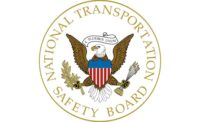
While the National Transportation Safety Board (NTSB) and other agencies investigate Saturday’s Asiana Airlines crash at San Francisco International Airport, the local coroner’s office is trying to determine whether one of the two fatalities in the incident was caused by a fire truck that was rushing to the burning plane.
Officials say autopsies on the two victims – both teenage girls from China – are expected to be completed later today.
The San Francisco Fire Department notified the coroner’s office that a fire truck may have been involved in the death of one of the girls.
San Mateo County Coroner Robert Foucrault said one of the bodies was found on the tarmac near where the plane's tail broke off when it slammed into the runway. The other was found about 30 feet away from where the jetliner came to rest after it skidded down the runway.
Crash occurred during attempted landing
An estimated 180 of the 291 passengers and 16 crew members aboard Flight 214 were taken to area hospitals for treatment. An unknown number of people are in critical condition. Many of those injured have spinal fractures from being “bounced” around while being restrained by seat belts, according to the doctors treating them. Head injuries, internal injuries, fractured bones and burns have also been reported. The flight, which had originated in Shanghai and stopped in Seoul before crossing the Pacific to the United States, crashed as the pilots were attempting to land.
Pilot was in training
A spokesperson for Asiana Airlines said the jetliner’s pilot, Lee Kang-kuk, was in training to become fully qualified on a Boeing 777 and had clocked 43 hours on the model – although he was an experienced pilot on other types of planes. Copilot Lee Jung-min had more than 3,000 hours on the Boeing 777 model.
Too slow for a safe landing
NTSB chair Deborah Hersman said the pilot was flying much too slowly for a safe landing as he approached the airport – well below the 137 knots (157 mph) required for the maneuver. "We're not talking about a few knots," she said.
Hersman said preliminary indications are that the slow speed triggered a device that warned of an impending stall. There was an increase in speed several seconds before the crash, then an attempt to abort the landing 1.5 seconds before impact.
There was no evidence that the Boeing 777 was experiencing any mechanical problems, based on the two “black boxes” that were recovered from the jet, according to Hersman.
She said NTSB investigators will conduct interviews with the pilots, crew members and passengers in order to reconstruct the events leading up the accident. NTSB Senior Aviation Accident Investigator Bill English will serve as investigator-in-charge.
